const RED = 'R';
const BLUE = 'B';
const VOTERS_PER_DISTRICT = 10;
const neighbours = [{x: 1, y: 0}, {x: 0, y: 1}, {x: -1, y: 0}, {x: 0, y: -1}];
/* UTILITY FUNCTIONS */
/**
Create a generator that starts at a random point p, 0 <= p < max
The generator will iterate over values p, p+1, ... max, 0, ... p-1
*/
function* cyclic_generator(max) {
let start = _.random(max);
for (let i=0; i<max; i++) {
yield (i + start) % max;
}
}
/**
Return grid[x][y] if x and y are within grid. Otherwise return undefined
*/
function grid_get(grid, x, y) {
if(_.isUndefined(grid[x])) {
return undefined;
}
else {
return grid[x][y];
}
}
/** Generates a 2d array red and blue voters */
function generate_voters() {
return _.times(5, x => _.times(10, () => {return {vote: x > 2 ? RED : BLUE, district_vote: 0xffffff}}))
}
/** Generate an initial state */
function generate_initial_state() {
return _.range(5).map(x => _.range(10).map(y => {return {x, y}}));
}
/**
Randomly swap two squares in the grid between two districts.
The new square to be added must be connected to the district, and the
old square must not break another district in two
*/
function evolve_state(state) {
state = _.cloneDeep(state);
// Create a grid with the district number
let point_to_district = _.range(5).map(x => _.range(10).map(y => -1));
state.forEach((district, i) => district.forEach(({x, y}) => point_to_district[x][y] = i));
// swap a point from source_district to target_district.
// then swap a point from target_district to source_district.
for(let source_district_idx of cyclic_generator(state.length)) {
let source_articulation_points = state[source_district_idx].filter(point => is_swappable(point_to_district, point, source_district_idx));
for(let source_point_idx of cyclic_generator(source_articulation_points.length)) {
let source_point = source_articulation_points[source_point_idx];
for(let neighbour_idx of cyclic_generator(4)) {
let neighbour = neighbours[neighbour_idx];
let target_district_idx = grid_get(point_to_district, source_point.x + neighbour.x, source_point.y + neighbour.y);
if (_.isUndefined(target_district_idx) || target_district_idx == source_district_idx) {
continue;
}
// swap the source point
point_to_district[source_point.x][source_point.y] = target_district_idx;
_.remove(state[source_district_idx], ({x, y}) => x == source_point.x && y == source_point.y);
// we don't add the point the the target array yet because we don't want to swap that point back
// try to find a point in target_district that we can move to source_district
let target_articulation_points = state[target_district_idx].filter(point => is_swappable(point_to_district, point, target_district_idx));
for(let target_point_idx of cyclic_generator(target_articulation_points.length)) {
let target_point = target_articulation_points[target_point_idx];
for(let n of neighbours) {
if(grid_get(point_to_district, target_point.x + n.x, target_point.y + n.y) === source_district_idx) {
// found a point that we can swap!
// console.log('swapping points!', source_point, target_point);
_.remove(state[target_district_idx], ({x, y}) => x == target_point.x && y == target_point.y);
state[target_district_idx].push(source_point);
state[source_district_idx].push(target_point);
return state;
}
}
}
// unswap source point since we were unsuccessful
point_to_district[source_point.x][source_point.y] = source_district_idx;
state[source_district_idx].push(source_point);
}
}
}
throw 'Could not find any states to swap' // this should never happen, since there will always be the option of reversing the previous step
}
/*
Return whether a point can be removed from a district without creating disjoint districts.
In graph theory, points that cannot be removed are articulation points.
For a general algorithm, see: https://stackoverflow.com/questions/15873153/explanation-of-algorithm-for-finding-articulation-points-or-cut-vertices-of-a-gr
My version takes advantage of the fact that we're on a grid and that all the districts must be continuous,
so we can consider only the immediate neighbours of a point.
*/
function is_swappable(grid, p, district) {
// if the the point is not even in this district, it makes no sense for this to consider this point at all
if(grid[p.x][p.y] != district) {
return false;
}
// if two opposite edges are part of this district, this is an articulation point
// .x. x is an articulation point
// Exception:
// .x. x is not an articulation point
// ...
if (grid_get(grid, p.x+1, p.y) === district && grid_get(grid, p.x-1, p.y) === district && grid_get(grid, p.x, p.y+1) !== district && grid_get(grid, p.x, p.y-1) !== district) {
return false;
}
if (grid_get(grid, p.x, p.y+1) === district && grid_get(grid, p.x, p.y-1) === district && grid_get(grid, p.x+1, p.y) !== district && grid_get(grid, p.x-1, p.y) !== district) {
return false;
}
// check if any corners are missing:
// .x x is not an articulation point .x x is an articulation point
// .. .
for(let i = 0; i < 4; i++) {
let nx = neighbours[i].x;
let ny = neighbours[i].y;
let nx2 = neighbours[(i+1)%4].x;
let ny2 = neighbours[(i+1)%4].y;
if (grid_get(grid, p.x+nx, p.y+ny) === district && grid_get(grid, p.x+nx2, p.y+ny2) === district && grid_get(grid, p.x+nx+nx2, p.y+ny+ny2) !== district) {
return false;
}
}
return true;
}
/** Count how many districts each party wins */
function get_winners(state, voters) {
let red_wins = 0;
let blue_wins = 0;
let tied = 0;
let wasted_red_votes= 0; // see https://en.wikipedia.org/wiki/Wasted_vote
let wasted_blue_votes = 0;
state.forEach(district => {
let counts = _.countBy(district.map(({x, y}) => voters[x][y].vote))
if ((counts[BLUE] || 0) > (counts[RED] || 0)) {
blue_wins++;
wasted_blue_votes += (counts[BLUE] || 0) - VOTERS_PER_DISTRICT / 2 - 1;
wasted_red_votes += (counts[RED] || 0);
}
else if ((counts[RED] || 0) > (counts[BLUE] || 0)) {
red_wins++;
wasted_red_votes += (counts[RED] || 0) - VOTERS_PER_DISTRICT / 2 - 1;
wasted_blue_votes += (counts[BLUE] || 0);
}
else {
tied++;
}
});
return {red_wins, blue_wins, tied, wasted_red_votes, wasted_blue_votes};
}
/* GUI */
/* Display a grid showing which districts each party won */
function render_districts(state, voters) {
let red_districts = 0;
let blue_districts = 0;
let grey_districts = 0;
// Color each district
state.forEach(district => {
let counts = _.countBy(district.map(({x, y}) => voters[x][y].vote))
let district_color;
if ((counts[BLUE] || 0) > (counts[RED] || 0)) {
district_color = 'blue' + blue_districts++;
}
else if ((counts[RED] || 0) > (counts[BLUE] || 0)) {
district_color = 'red' + red_districts++;
}
else {
district_color = 'grey' + grey_districts++;
}
district.map(({x, y}) => voters[x][y].district_color = district_color);
});
return m('table', [
m('tbody', voters.map(row =>
m('tr', row.map(cell => m('td', {'class': cell.district_color}, cell.vote)))
))
]);
}
/** Score a state with four criteria:
- maximize number of red districts
- minimize number of blue districts
- minimize number of red voters in districts that red wins
- maximize number of blue voters in districts that blue wins
The first two criteria are arbitrarily worth 10x more than the latter two
The latter two are to nudge the final result toward the correct solution
*/
function heuristic(state) {
let {red_wins, blue_wins, tied, wasted_red_votes, wasted_blue_votes} = get_winners(state, voters);
return red_wins - blue_wins - 0.1 * wasted_red_votes + 0.1 * wasted_blue_votes;
}
/**
Optimization routine to find the maximum of prob_fcn.
prob_fcn: function to maximize. should take state as its argument
transition: how to generate another state from the previous state
initialize_state: a function that returns an initial state
iters: number of iterations to run
Stolen from my repo here: https://github.com/c2huc2hu/automated-cryptanalysis/blob/master/part3.js
*/
function anneal(prob_fcn, transition, initialize_state, seeds=1, iters=1000) {
let best_result = initialize_state();
for(let i=0; i<seeds; i++) {
let curr_state = initialize_state();
let curr_cost = prob_fcn(curr_state);
// perform annealing. do a few extra steps with temp=0 to refine the final solution
for(let j=0; j<iters; j++) {
let candidate_state = transition(curr_state);
let candidate_cost = prob_fcn(candidate_state);
temp = 0.8 - j / iters;
if(candidate_cost >= curr_cost || Math.random() < temp) {
curr_state = candidate_state;
curr_cost = candidate_cost;
}
}
if(prob_fcn(curr_state) > prob_fcn(best_result)) {
best_result = curr_state;
}
}
return best_result;
}
let voters = generate_voters();
let state = generate_initial_state();
// main rendering code: this code renders the UI
m.mount(document.getElementById('actions'), {view: function() {
return m('div', [
m('button', {onclick: () => state = generate_initial_state()}, 'Reset'),
m('button', {onclick: () => state = evolve_state(state)}, 'Randomly evolve'), // randomly evolves
m('br'),
m('label', {'for': 'radio-blue'}, 'Gerrymander for blue'),
m('input', {type: 'radio', name: 'heuristic', value: 'blue', id: 'radio-blue'}),
m('label', {'for': 'radio-red'}, 'Gerrymander for red'),
m('input', {type: 'radio', name: 'heuristic', value: 'red', id: 'radio-red'}),
m('br'),
m('label', {'for': 'anneal-steps'}, 'Anneal steps: '),
m('input', {id: 'anneal-steps', type: 'number', value: '500'}),
m('button', {onclick: function() {
let minimize = document.getElementById('radio-red').checked;
let _heuristic = minimize ? heuristic : state => -heuristic(state)
let new_state = anneal(_heuristic, evolve_state, generate_initial_state, 1, parseInt(document.getElementById('anneal-steps').value));
if(_heuristic(new_state) > _heuristic(state)) {
state = new_state;
}
else {
console.log('found no better solutions')
}
}}, 'Anneal!'),
]);
}});
// This renders the grid
m.mount(document.getElementById('grid'), {
view: function() {
return render_districts(state, voters)
}
});
// state = anneal(heuristic, evolve_state, generate_initial_state, 5, 1000);
document.getElementById('radio-red').checked = true;
m.redraw();
/* Layout */
table {
border: solid 1px black;
}
td {
padding: 5px;
border: solid 1px black;
}
button {
margin: 10px;
}
p {
max-width: 500px;
}
/* Colour classes. In hindsight, this wasn't a good idea */
.red0 {
background-color: red;
}
.red1 {
background-color: darkred;
}
.red2 {
background-color: pink;
}
.red3 {
background-color: deeppink;
}
.red4 {
background-color: lightsalmon;
}
.blue0 {
background-color: aqua;
}
.blue1 {
background-color: cadetblue;
}
.blue2 {
background-color: steelblue;
}
.blue3 {
background-color: royalblue;
}
.blue4 {
background-color: midnightblue;
}
.grey0 {
background-color: lightgrey;
}
.grey1 {
background-color: silver;
}
.grey2 {
background-color: darkgray;
}
.grey3 {
background-color: gray;
}
.grey4 {
background-color: dimgray;
}
<!DOCTYPE html>
<html>
<head>
<script data-require="lodash.js@4.17.4" data-semver="4.17.4" src="https://cdn.jsdelivr.net/npm/lodash@4.17.4/lodash.min.js"></script>
<script data-require="mithril@1.0.1" data-semver="1.0.1" src="https://cdnjs.cloudflare.com/ajax/libs/mithril/1.0.1/mithril.js"></script>
<link rel="stylesheet" href="style.css" />
</head>
<body>
<h1>Gerrymandering simulation</h1>
<p>
There are two parties, red and blue (chosen because they contrast well).
Each person will always vote a certain way, and is marked with R or B in the table.
People are divided into districts, shown here as groups of people marked in a single colour.
</p>
<p>
Use the buttons below to divide up districts.
The reset button will restore the initial state.
The randomly-evolve button will swap two people between districts
The anneal button will optimize for your chosen party.
You should limit the number of steps to ~1000 or your browser will appear to hang.
In general, it is sufficient to run a few seeds for 500 iterations.
</p>
<div id="grid"></div>
<div id="actions"></div>
<script src="script.js"></script>
</body>
</html>

